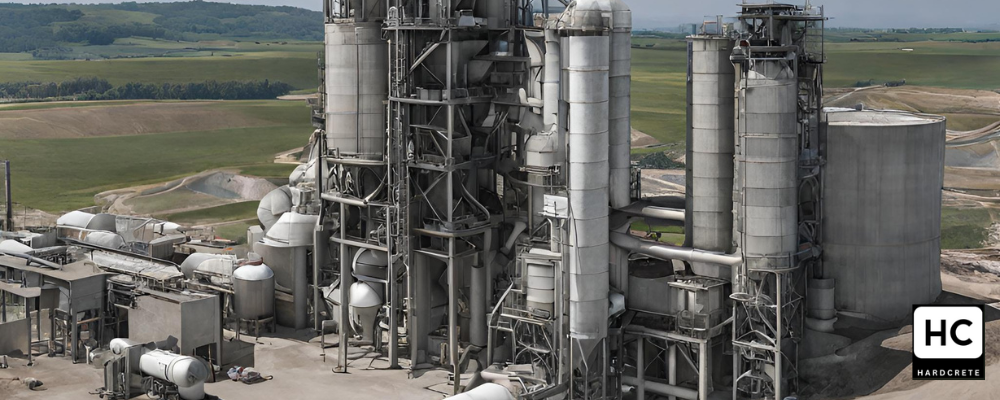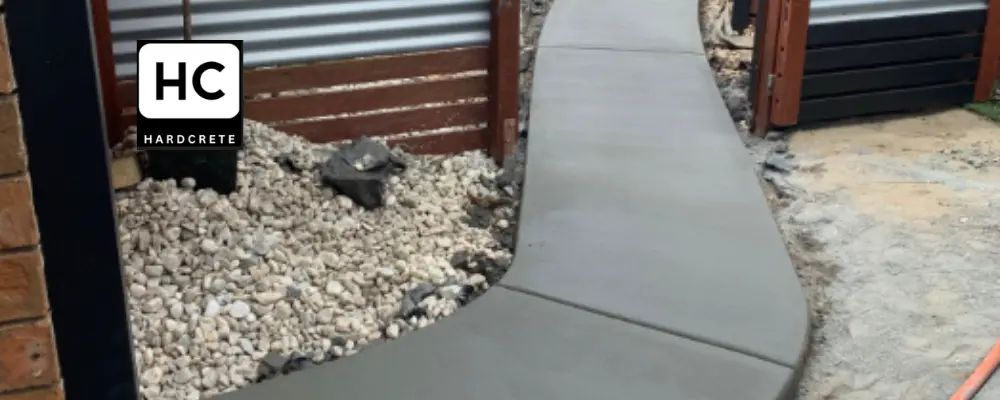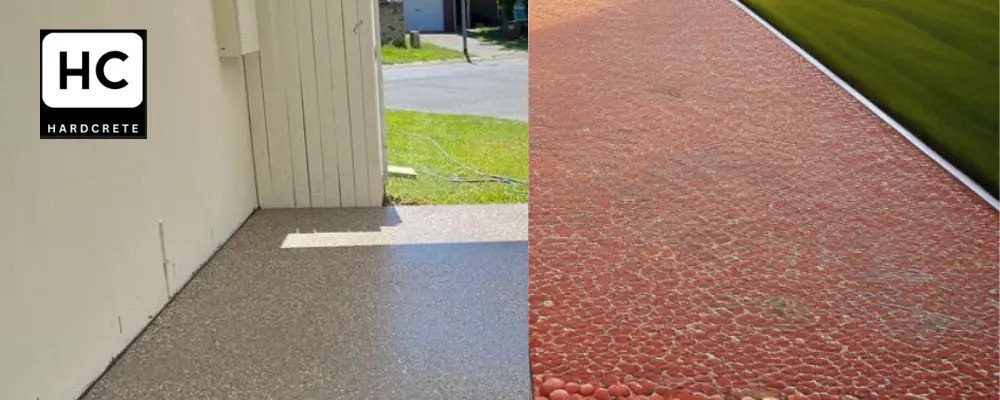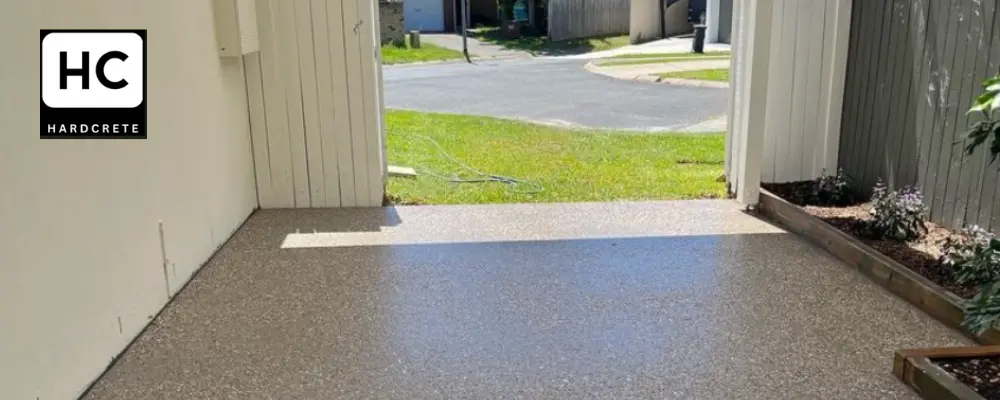Reduce Concrete Carbon Emissions: Expert Tips
Key Highlights
- Concrete production is responsible for 8% of global carbon emissions, making it crucial to find ways to reduce its environmental impact.
- Key strategies for reducing concrete carbon emissions include improving energy efficiency, using low-carbon cement alternatives, and incorporating supplementary cementitious materials (SCMs).
- Promising innovations in the industry include breakthroughs in carbon capture, utilization, and storage (CCUS) and the development of eco-friendly concrete through biotechnology.
- Sustainable urban planning and design, along with maintenance and recycling efforts, can also contribute to reducing concrete usage and emissions.
- Policies and regulatory frameworks are essential in supporting emission reductions in the concrete industry, both at the global and national levels.
- The private sector, including construction companies and cement manufacturers, plays a crucial role in reducing concrete carbon emissions through corporate responsibility and sustainable practices.

Introduction
Concrete is one of the most widely used construction materials, playing a vital role in the development of our cities and infrastructure. However, its production comes at a significant cost to the environment. Concrete production is responsible for approximately 8% of global carbon emissions, with tons of carbon emitted annually, making it a major contributor to climate change.
As the demand for concrete continues to rise, it is essential to find ways to reduce its carbon footprint. This blog explores expert tips and strategies for reducing concrete carbon emissions, from innovative technologies to sustainable design and construction approaches. By implementing these strategies, we can minimize the environmental impact of concrete production and work towards a more sustainable future.
Understanding the Impact of THE Concrete carbon footprint
Concrete production involves the use of portland cement, which is a key ingredient in the process. However, the production of portland cement releases a significant amount of carbon dioxide (CO2) into the atmosphere, contributing to global carbon emissions. The concrete industry is also responsible for a large share of global cement production, which further adds to its carbon footprint. To address this issue, it is crucial to understand the role of cement in concrete’s carbon emissions and explore alternatives, such as incorporating fly ash or other substitutes, in the concrete mix to reduce its environmental impact.
Concrete: A Major Contributor to Global Emissions
Concrete production is a major contributor to global carbon emissions due to the carbon dioxide released during the production of portland cement. The cement industry accounts for a significant portion of global emissions, with the emissions intensity of production increasing in recent years. The global demand for cement is expected to continue to grow, making it essential to find ways to reduce its carbon footprint and decrease the consumption of large amounts of energy. By implementing strategies to improve energy efficiency, switch to lower-carbon fuels, and promote material efficiency, we can significantly reduce the carbon emissions associated with concrete production in the US, EU, and around the world.
The Role of Cement in Concrete’s Carbon Footprint
Cement plays a crucial role in concrete’s carbon footprint. Portland cement, the most common type of cement used in concrete production, is made by heating limestone and other materials in a kiln, which releases carbon dioxide as a byproduct. The carbon footprint of cement is further increased by the high energy requirements of the cement manufacturing process. As cement is a key ingredient in concrete, reducing its carbon footprint is essential for mitigating the environmental impact of concrete production. By exploring alternative cementitious materials and improving the efficiency of cement production, we can significantly reduce the carbon emissions associated with concrete.
Innovative Strategies for Reducing Concrete Carbon Emissions
Innovative strategies are being developed to reduce concrete carbon emissions and create a more sustainable industry. These strategies focus on using low carbon concrete, exploring cement alternatives, and incorporating supplementary cementitious materials (SCMs) into concrete mixtures. By adopting these innovative approaches, the concrete industry can significantly reduce its carbon footprint and contribute to global emission reduction goals. These strategies require advancements in technology, research, and collaboration between industry stakeholders, including the Cement Association of Canada, to achieve widespread adoption and make a meaningful impact on reducing concrete carbon emissions and promoting the use of sustainable building materials.
Advancements in Low-Carbon Cement Alternatives
One promising strategy for reducing concrete carbon emissions is the development of low-carbon cement alternatives. These alternatives aim to replace or partially substitute portland cement with materials that have a lower carbon footprint. For example, fly ash, a byproduct of coal combustion, can be used as a cement substitute in concrete production. Other alternatives include blast furnace slag, which is a byproduct of the iron and steel industry, and calcined clay. By incorporating these low-carbon alternatives into concrete mixtures, the carbon emissions associated with cement production can be significantly reduced. Additionally, advancements in low-carbon cement alternatives have allowed for the reduction of cement content in concrete, further decreasing its carbon footprint.
Incorporating Supplementary Cementitious Materials (SCMs)
Another innovative strategy for reducing concrete carbon emissions is the incorporation of supplementary cementitious materials (SCMs) into concrete mixtures. SCMs are materials that can be added to cement to improve its performance and reduce the amount of portland cement required. Common SCMs include fly ash, blast furnace slag, and silica fume, as well as ground granulated blast furnace slag (GBFS), ground limestone, and gypsum. These materials, known as gcca, not only contribute to reducing carbon emissions but also enhance the durability and strength of concrete. By increasing the use of SCMs in concrete production, the industry can minimize its environmental impact and work towards more sustainable construction practices.
Design and Construction Approaches to Minimize Concrete Use
In addition to using low-carbon materials and incorporating SCMs, sustainable urban planning and design can play a significant role in reducing concrete carbon emissions. By adopting design approaches that minimize the use of concrete, such as using alternative materials or optimizing structural systems, the amount of concrete needed in construction projects can be reduced. Additionally, material efficiency strategies, such as maximizing the lifespan of buildings and infrastructure, can further minimize concrete usage. Structural engineers and architects play a critical role in implementing these approaches and ensuring that sustainable design principles are integrated into construction projects.
Emphasizing Sustainable Urban Planning and Design
Sustainable urban planning and design are crucial for reducing concrete carbon emissions. By adopting environmentally conscious design principles, such as utilizing green spaces, optimizing building orientation for energy efficiency, and promoting sustainable transportation options, the demand for concrete can be minimized. Additionally, incorporating renewable energy sources into urban planning can further reduce the carbon footprint of concrete production and construction. Sustainable urban planning and design not only contribute to reducing concrete carbon emissions but also create healthier and more resilient cities. By prioritizing sustainability in urban development, we can create a more sustainable future for generations to come.
Case Studies: Success Stories in Reducing Concrete Usage
Several case studies highlight successful efforts to reduce concrete usage and carbon emissions in large-scale projects. These success stories demonstrate the feasibility and impact of adopting sustainable construction practices. Some examples include:
- The Hudson Yards project in New York City utilized a variety of sustainable design and construction approaches, including the use of alternative materials, energy-efficient systems, and green spaces. This reduced the overall concrete usage and carbon emissions associated with the project.
- The Masdar City project in Abu Dhabi focused on sustainable urban planning and design, incorporating renewable energy sources and using materials with a lower carbon footprint. This resulted in a significant reduction in concrete usage and carbon emissions.
- The Crossrail project in London implemented innovative construction methods, including the use of precast and prefabricated components, to minimize the amount of concrete required. This led to a substantial reduction in carbon emissions.
These case studies demonstrate that sustainable construction practices can significantly reduce concrete usage and carbon emissions without compromising the functionality or aesthetic appeal of the projects.
Promoting the Reuse and Recycling of Concrete
One effective strategy for reducing concrete carbon emissions is the promotion of the reuse and recycling of concrete materials. Concrete can be crushed and processed into recycled aggregate, which can be used as a substitute for natural aggregate in new concrete mixtures. This reduces the need for new concrete production and minimizes the environmental impact associated with extracting and processing natural resources. Additionally, using recycled concrete in construction projects reduces the amount of waste sent to landfills. By promoting the reuse and recycling of concrete, including using it as gravel for new construction projects, the industry can minimize its carbon footprint and work towards a more sustainable future.
Extending the Life of Concrete Structures Through Maintenance
Proper maintenance of concrete structures is essential for extending their lifespan and reducing the need for new construction. Regular inspections, repairs, and maintenance activities can prevent deterioration and extend the service life of concrete structures. This not only reduces the demand for new concrete production but also minimizes the carbon emissions associated with the construction of new structures. Effective maintenance practices, such as applying protective coatings, sealing cracks, and addressing structural issues, contribute to the sustainability and longevity of concrete infrastructure. By prioritizing maintenance and investing in the preservation of concrete structures, the industry can significantly reduce its carbon footprint and promote sustainable construction practices.
Global Initiatives and Agreements on Reducing Construction Emissions
Several global initiatives and agreements are focused on reducing carbon emissions in the construction industry, including the production of concrete. These initiatives bring together governments, industry associations, and other stakeholders to collaborate and implement sustainable construction practices. Examples of global initiatives include the World Economic Forum’s Concrete Action for Climate initiative and the Mission Possible Partnership’s Cement Sector Transition Strategy, both of which have been supported by the concrete association. These initiatives aim to drive innovation, promote collaboration, and support the adoption of low-carbon technologies and materials in the construction industry, in response to the increasing demand for cement for infrastructure in developing countries. By working together on a global scale, the industry can accelerate the transition to more sustainable construction practices and significantly reduce carbon emissions. In September 2020, the Global Cement and Concrete Association (GCCA) released a Climate Ambition pledge that aspires, not just to reduce the carbon footprint of concrete but, to achieve carbon neutrality across the industry by 2050. Many cement and concrete companies have already signed this commitment and have had their strategies third-party verified by the Science Based Targets initiative.
National and Local Policies Encouraging Sustainable Construction Practices
In addition to global initiatives, many countries and local governments are implementing policies to encourage sustainable construction practices and reduce carbon emissions in the concrete industry. National policies may include regulations on emissions from cement production, incentives for using low-carbon materials, and requirements for sustainable design and construction approaches. Local policies can focus on promoting sustainable urban planning, setting energy efficiency standards for buildings, and supporting the use of renewable energy sources. By implementing these policies, governments can create an enabling environment for sustainable construction practices and contribute to emission reduction targets at the national and local levels.
Technological Innovations in Concrete Production
Technological innovations are driving advancements in concrete production and offering new opportunities for reducing carbon emissions. These innovations include breakthroughs in carbon capture, utilization, and storage (CCUS), as well as the development of eco-friendly concrete through biotechnology and other new technologies. By leveraging these technological innovations, such as new technologies for producing lower carbon concrete, the industry can transition to more sustainable production methods and significantly reduce its carbon footprint. These innovations require continued research, investment, and collaboration between industry stakeholders to achieve widespread adoption and make a meaningful impact on reducing concrete co emissions.
Breakthroughs in Carbon Capture, Utilization, and Storage (CCUS)
Carbon capture, utilization, and storage (CCUS) technologies offer a promising solution for reducing carbon emissions in concrete production. These technologies capture carbon dioxide (CO2) emissions from cement plants and other sources in Europe, preventing them from being released into the atmosphere. The captured CO2 can then be stored underground or utilized in other industrial processes. CCUS technologies are still being developed and deployed at scale, but they hold significant potential for reducing the carbon footprint of the concrete industry. By investing in and promoting the adoption of CCUS technologies in Europe, the industry can contribute to global emission reduction goals and create a more sustainable future.
Developing Eco-friendly Concrete Through Biotechnology
Biotechnology offers another avenue for developing eco-friendly concrete with a reduced carbon footprint. Researchers are exploring the use of microorganisms and biological processes to produce concrete materials that are more sustainable and environmentally friendly. These biotechnological approaches can result in concrete that requires less energy and emits fewer carbon emissions during production. Additionally, biotechnology can enhance the durability and performance of concrete, further reducing the need for maintenance and replacement. By investing in research and development in this field, the concrete industry can unlock new possibilities for reducing its environmental impact and creating a more sustainable built environment.
The Role of Industry and Private Sector in Emission Reduction
The role of the industry and private sector is crucial in achieving emission reductions in the concrete industry. Cement manufacturers, construction companies, and other industry stakeholders have a responsibility to adopt sustainable practices and reduce their carbon footprint. This includes setting corporate responsibility and sustainability goals, investing in research and development of low-carbon technologies, and implementing sustainable construction practices. By taking a proactive approach and working towards emission reduction targets, the industry and private sector can play a significant role in mitigating the environmental impact of concrete production and promoting a more sustainable future.
Corporate Responsibility and Sustainability Goals in Construction
Corporate responsibility and sustainability goals play a crucial role in driving emission reductions in the construction industry. Cement manufacturers and construction companies can set ambitious targets for reducing their carbon footprint and implementing sustainable practices. This includes investing in research and development of low-carbon technologies, optimizing energy efficiency in production processes, and promoting the use of sustainable materials. By demonstrating leadership and commitment to sustainable practices, the industry can inspire others to follow suit and create a positive impact on the environment. Corporate responsibility and sustainability goals align with global emission reduction targets and contribute to a more sustainable built environment.
Collaborative Projects and Partnerships for Sustainable Solutions
Collaborative projects and partnerships are essential for driving sustainable solutions in the concrete industry. By working together, industry stakeholders, research institutions, and governments can share knowledge, resources, and expertise to develop and implement innovative strategies for reducing concrete carbon emissions and promoting global development. Collaborative projects can focus on research and development of low-carbon technologies, pilot projects for testing new approaches, and knowledge sharing platforms. Partnerships between industry associations, governments, and non-profit organizations can also foster collaboration and promote sustainable practices throughout the concrete value chain. By leveraging the power of collaboration, the industry can accelerate the transition to more sustainable concrete production and contribute to global emission reduction goals in the face of disruptive forces and the expected rise in global development.
Conclusion
In conclusion, reducing concrete carbon emissions is not just a responsibility; it’s an opportunity for positive change. By exploring innovative strategies, emphasizing sustainable practices, and promoting eco-conscious initiatives, we can make a real difference in minimizing the environmental impact of concrete production. From low-carbon cement alternatives to effective urban planning, every step counts toward a greener future. Together, through collaboration and shared goals, we can pave the way for a more sustainable construction industry. Let’s build a better tomorrow, one concrete block at a time!
Frequently Asked Questions
What are the most effective alternatives to traditional cement?
The most effective alternatives to traditional cement include supplementary cementitious materials (SCMs) such as fly ash and blast furnace slag. These materials can partially replace portland cement in concrete production, reducing its carbon footprint. Other alternatives being explored include calcined clay and natural pozzolans.
How can individuals contribute to reducing the carbon footprint of concrete?
Individuals can contribute to reducing the carbon footprint of concrete by adopting sustainable practices. This includes using concrete efficiently, promoting the reuse and recycling of concrete materials, and supporting sustainable construction practices. Individuals can also advocate for policy changes and encourage the use of low-carbon concrete alternatives.
Are there any significant case studies of reduced concrete emissions in large-scale projects?
Yes, several case studies demonstrate successful efforts to reduce concrete emissions in large-scale projects. Examples include the Hudson Yards project in New York City, the Masdar City project in Abu Dhabi, and the Crossrail project in London. These projects implemented sustainable design and construction practices, resulting in significant emissions reductions.




